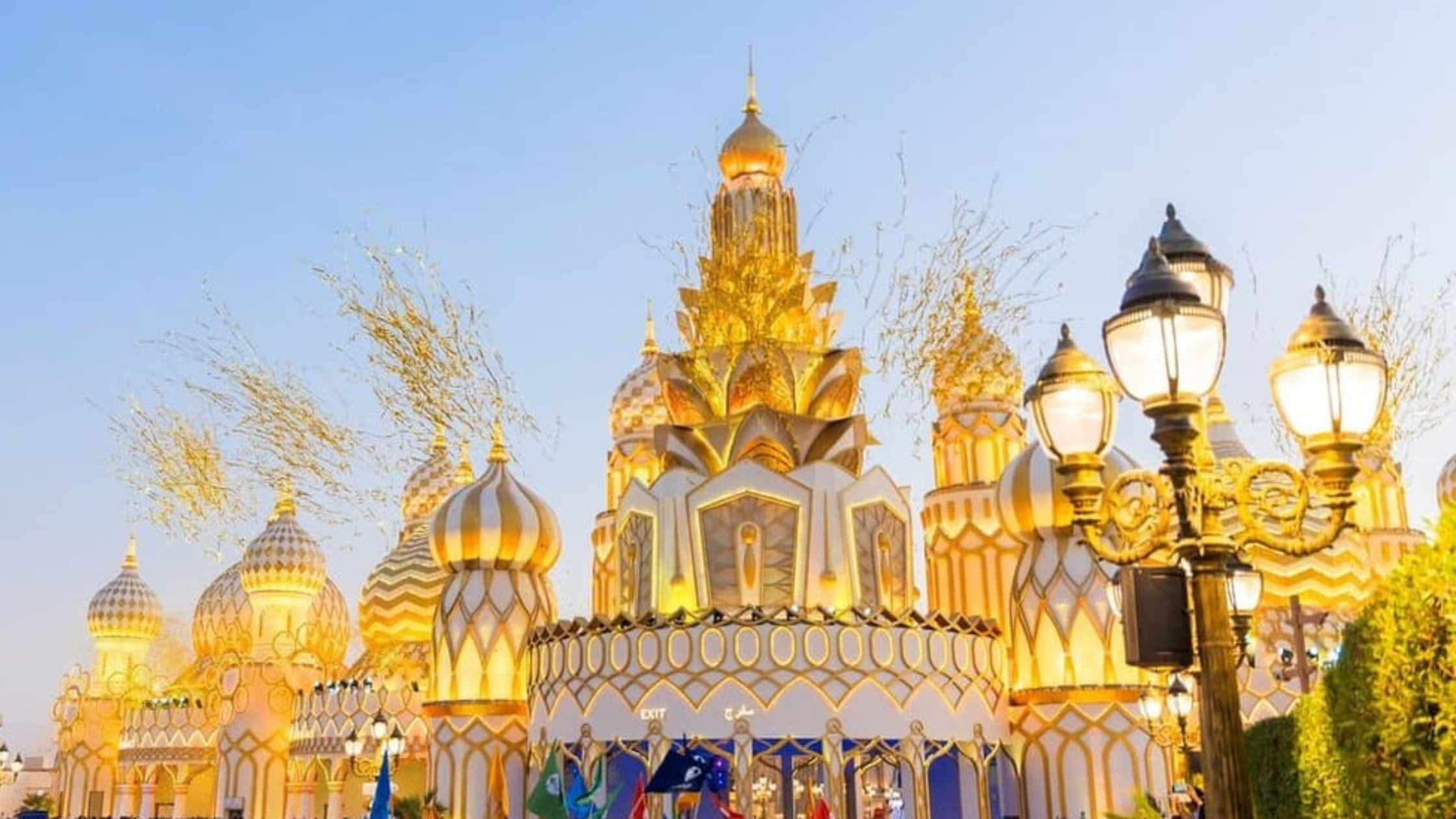Middle East Tourism: Innovation and Sustainability in 2025

The tourism industry in the Middle East has been undergoing a remarkable transformation. After the challenges posed by the COVID-19 pandemic, the region has emerged stronger, leveraging innovation, sustainability, and a focus on traveler safety.
As global travel begins to recover, destinations across the Middle East are increasingly becoming the go-to choice for international tourists, positioning themselves as leaders in the global tourism sector. One key event showcasing this progress is the Arabian Travel Market (ATM) 2025, where industry leaders come together to share insights, trends, and strategies driving tourism’s rebound in the region.
The Rise of Middle Eastern Tourism Post-Pandemic
As the world navigates through the post-pandemic era, tourism has quickly become one of the most crucial sectors for economic recovery globally. In the Middle East, tourism is witnessing a rapid revival, with countries like the UAE, Egypt, Saudi Arabia, and Qatar leading the way. According to recent reports from the United Nations World Tourism Organization (UNWTO), international tourist arrivals in 2024 surpassed pre-pandemic levels by 32%, with the Middle East recording some of the highest growth rates in global tourism.
This surge can be attributed to several factors, including a well-coordinated response to the pandemic, enhanced safety measures, and a growing focus on innovative, sustainable tourism. The region has adapted to changing global conditions, ensuring that it remains at the forefront of the tourism industry. The Arabian Travel Market (ATM) 2025 serves as an essential platform for industry stakeholders to share their latest developments and strategies that are shaping the future of tourism in the Middle East.
Innovating for the Future: Technology and Sustainable Practices
One of the central discussions at ATM 2025 revolves around the integration of technology and sustainability within the tourism industry. As travelers become more conscious of their environmental impact, the Middle East is stepping up its efforts to implement sustainable tourism practices.
Countries like the UAE have been pioneers in integrating cutting-edge technology into the tourism experience. From the introduction of smart tourism initiatives to the use of artificial intelligence (AI) in enhancing visitor experiences, the Middle East is positioning itself as a global leader in tech-enabled tourism.
Moreover, sustainability is a key focus across the region. The Middle East is known for its commitment to environmental sustainability, and this commitment is reflected in its tourism strategies. For example, the UAE’s cruise industry has made significant strides in implementing eco-friendly practices, with newer ships adhering to stringent environmental standards, especially in sensitive regions like the Red Sea. These efforts not only help preserve the environment but also ensure that tourists enjoy their trips while contributing to sustainable practices.
Egypt’s Resilience and Recovery in Tourism
Egypt, one of the most popular destinations in the Middle East, has shown impressive resilience in rebuilding its tourism industry. Despite facing several challenges over the past decade, including political instability and the global pandemic, Egypt’s tourism sector has demonstrated significant recovery. By adopting new strategies, Egypt has not only recovered but is now surpassing its pre-pandemic tourism levels.
At ATM 2025, Ghada Shalaby, Executive Director of the Egyptian Hotel Association, shared how the country’s tourism approach was transformed during the pandemic. The government’s swift action in implementing health and safety measures, including hygiene protocols and travel advisories, played a vital role in reassuring international visitors. These efforts were pivotal in Egypt’s ability to recover quickly, with tourism numbers surpassing expectations by the end of 2023.
Shalaby emphasized that Egypt’s tourism revival is not just about numbers, but about creating meaningful experiences for visitors. By focusing on local culture, history, and unique heritage sites, Egypt continues to appeal to travelers looking for immersive, authentic experiences.
The Cruise Industry: Emphasizing Sustainability and Luxury
The cruise industry in the Middle East has undergone a significant transformation, focusing on sustainability while maintaining the luxury that attracts high-end travelers. During the ATM 2025 sessions, cruise industry experts highlighted the region’s commitment to implementing sustainable practices, ensuring that the Middle East remains a top destination for luxury travelers who are increasingly concerned with their environmental footprint.
Cruise ships operating in the Red Sea and the Arabian Gulf are now adhering to some of the strictest environmental regulations, using low-emission fuels and adopting advanced waste management systems. These efforts are part of a broader push within the industry to make cruising more sustainable and environmentally responsible.
The luxury cruise market in the Middle East continues to thrive, attracting affluent travelers from around the globe. With high-end amenities, personalized services, and breathtaking destinations like Dubai, Abu Dhabi, and the Egyptian coast, the region’s cruise sector is poised for continued growth in the coming years.
Building Trust: Addressing Media Perceptions
One challenge facing the tourism industry in the Middle East is the role of media in shaping public perceptions. Unfortunately, negative media portrayals of the region often influence the decision-making process of potential travelers. Outdated travel advisories, sensationalized news reports, and political narratives can cloud the region’s true potential as a safe and welcoming destination.
At ATM 2025, industry leaders discussed strategies to counter these negative portrayals. Ibrahim Osta, Global Tourism Lead at Chemonics International, emphasized the need for the Middle East to take a more proactive approach in shaping how the region is presented in the media. This involves working closely with international media outlets, influencers, and tourism boards to promote the true story of the Middle East’s safety, stability, and hospitality.
By utilizing digital platforms, influencers, and social media, tourism authorities in the region are striving to reach a broader audience, educating potential visitors about the region’s rich history, culture, and modern attractions. This effort aims to change perceptions and restore confidence in the region’s tourism offerings.
Sri Lanka’s Growing Focus on the Middle Eastern Market
While the Middle East remains a key player in the global tourism industry, other countries are also eyeing the region as a potential growth market. Sri Lanka, for instance, has increasingly turned its attention to the Middle East, seeking to attract more travelers from the Gulf Cooperation Council (GCC) countries.
Sampath Nishshanka, Managing Director of Sri Lanka Tourism Promotion Bureau (SLTPB), outlined the country’s strategy at ATM 2025 to target travelers from the Middle East. By offering tailored experiences focused on wellness tourism, cultural heritage, and luxury travel, Sri Lanka hopes to tap into the growing demand for high-end travel experiences from GCC nationals.
Sri Lanka’s proximity to the Middle East and its rich cultural heritage make it an attractive destination for Middle Eastern tourists looking for a unique blend of relaxation, adventure, and cultural immersion.
Looking Forward: The Future of Middle Eastern Tourism
As the world continues to recover from the pandemic, tourism in the Middle East is poised for continued growth. The region’s focus on innovation, sustainability, and traveler safety will help it maintain its position as a top destination for international visitors. The Arabian Travel Market (ATM) 2025 has shown that the Middle East is not only recovering but also evolving in response to changing consumer demands.
By embracing technology, prioritizing sustainability, and working to improve its global image, the Middle East is ensuring that its tourism sector remains competitive and appealing. As the region moves forward, it is clear that the future of tourism in the Middle East is bright, with new opportunities for travelers and industry stakeholders alike.
A Promising Future for Middle Eastern Tourism
The Middle East’s tourism industry has demonstrated resilience, adaptability, and an unwavering commitment to excellence. With the innovations presented at ATM 2025, it is clear that the region will continue to lead the way in global tourism. By focusing on sustainability, leveraging cutting-edge technologies, and building trust through accurate media portrayals, the Middle East is well-positioned to thrive in the coming years.
As travelers increasingly prioritize responsible tourism and seek authentic, unique experiences, the Middle East is poised to offer exactly what today’s tourist desires: a blend of tradition, modernity, luxury, and sustainability. The tourism sector’s growth will undoubtedly continue to play a significant role in the region’s economic recovery, making it an exciting time for both travelers and industry stakeholders alike.








2 Comments
[…] like ATM 2025 are pivotal in promoting the UAE’s tourism and travel sector to the world. Sheikh Mohammed bin Rashid emphasized that such events are more than temporary […]
[…] In a demonstration of mutual trust and strategic alignment, UAE President His Highness Sheikh Mohamed Bin Zayed Al Nahyan and Turkish President Recep Tayyip Erdoğan engaged in a vital phone conversation to discuss key areas of cooperation and regional developments. This high-level dialogue underscores the growing momentum in UAE-Turkey relations, especially in light of evolving regional challenges and opportunities. As both nations expand their diplomatic and economic engagements, the call signifies a shared vision for development, prosperity, and peace across the Middle East. […]
Comments are closed.